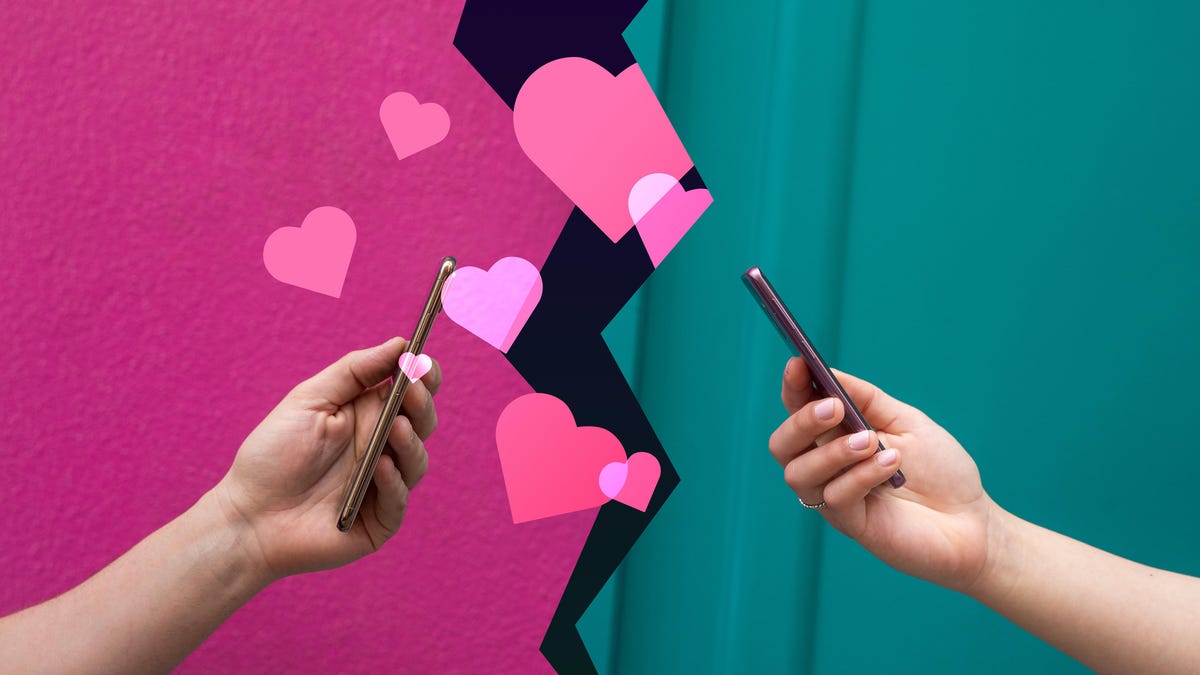How to avoid being catfished like these 16 women on the same Tinder date
Don't be fooled by fake online dating accounts.

The person on the other side of the screen may not be who they say they are.
Apps like Tinder and Bumble are popular sources for finding a date online, but they're also a playground for scummy catfishers, like the one who fooled 16 women in one night on Tinder. A catfisher creates fake profiles on social media sites and dating apps in order to prey on the vulnerable in hopes of humiliating them, scamming them for money or simply because they're bored.
If you're using dating sites or apps to find a potential partner, always exercise caution before you get too involved. A catfisher can be anyone, from a stranger to someone you know, like an ex-lover. Or worse, it could be a stalker trying to find out more information about you.
Read more: Best dating sites of 2019
Always look for signs, like if it feels like someone's trying to get too close, too quickly or if they always have excuses for not meeting in person or video chatting with you. Read on for more signs that you might be a victim of catfishing and how to avoid it.
Make sure the photo sent to you on dating apps is the actual person you're talking to.
Signs you're being catfished
If you notice any of these signs, trust your gut feeling and run. If it seems too good to be true, it probably is.
- The person you're connecting with doesn't have a social media presence, at all.
- You find multiples of the same social media accounts, like two Instagram or Facebook profiles -- this could mean one of the accounts is a fraud and has been copied.
- The same photo appears under different names around the internet.
- All of the pictures on the person's social media profiles are headshots or modeling photos.
- They're asking you to send them money because they claim they're "stuck in another country."
- They keep pushing you to send them intimate photos of yourself.
- They profess their love for you... but you've never met, and you just matched with them last week.
- They always come up with an excuse to avoid a phone call or video chat.
For your safety, do a Google search on people you connect with on dating apps.
Do your research
Once you've matched with someone you're interested in, conduct a Google search to make sure the person is who they say they are. Just search their first and last name, followed by the location. Oftentimes, you'll see social media profiles, but if the search comes up empty, that's a big, glaring red flag.
Dive into social media profiles
Most people have some sort of a social media presence, like Facebook, Instagram or Twitter , but they typically don't have two of each account. If you come across two Facebook profiles of the same person, it's possible a catfisher has created a fake account using someone else's photos. (Either that, or they're a public figure, and have both public and private accounts.)
To spot a fake social media account, look for these clues: Do they only have 15 friends? Just a few photos or vacation photos that look like they've been stripped straight from Google? Zero posts? These are all red flags and it's best to block and report them.
Do a reverse Google image search
Catfishers never use photos of themselves in order to avoid being caught, so they'll steal a photo from someone else's social media profile and claim it's them. If you're unsure about a photo someone sent you on Tinder, you can always perform a reverse Google image search to see if that picture has been posted anywhere else.
Using Google Chrome on your desktop, right-click the photo you'd like to search and select Search Google for Image. Or just go to images.google.com on any other browser and drag the photo into the search bar. If the search shows the image on someone else's Facebook page, you'll know you're being scammed. Block the account immediately and report it.
Try to set up a phone call or video chat
Before agreeing to meet with someone, make it a point to have a phone conversation or video chat. This is for your safety and can help confirm they actually exist.
If your date refuses or comes up with an elaborate story as to why they can't chat, it's probably because they're using a fake photo. Make it a rule to never meet up with someone unless you've been able to video chat.
Ask the person you're connecting with to do a video chat before you meet. Maybe don't use Memoji.
Never give up your personal info
This one seems like a no-brainer, but if you're deeply involved with someone, you may not see the warning signs. Once a catfisher has gained your trust, they may start asking more questions about you, like your birthday, where you live and eventually your bank account information.
Their arguments could be convincing, saying they'd like to come see you, but they need money to do so. And if you're motivated to help, you might be more likely to give up your information and become susceptible to identity theft.
Also, remember to set your social media accounts to private, so only friends can view what you post. If your information is public, it gives catfishers wider access to your life, which they can use to their advantage when approaching you online. Their next step would be to use that connection to con you into giving them even more personal information.
If you notice a catfish online, remember to report and stop contact with them immediately.
- CNET reporters Erin Carson and Laura Hautala contributed to this story.

